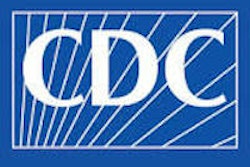
The number of people who are dying from cancer in the U.S. continues to fall, according to the latest report from the American Association for Cancer Research (AACR), titled "Cancer Progress Report 2017."
The U.S. cancer death rate fell 25% from 1991 to 2014 for adults and 35% for children, which translates into 2.1 million cancer deaths avoided, according to the AACR report.
| Change in U.S. cancer deaths, 1990-2014 | |||
| 1990 | 2014 | Percent change | |
| Cancer deaths per 100,000 U.S. adults | 214.95 deaths | 161.3 deaths | 25% |
| Cancer deaths for U.S. children | 3.4 deaths | 2.2 deaths | 35% |
What's more, the five-year relative survival rate for all cancers in the U.S. rose from 49% in the 1970s to 69% in 2013, the last year for which the AACR has data.
The declining death rate is due to research advances that have resulted in new therapies for cancer, such as nine new anticancer therapeutic agents approved by the U.S. Food and Drug Administration (FDA) over the past year, according to the report. The FDA has also approved a new optical imaging agent and new applications for eight previously approved cancer therapies.
In addition, patients who have their cancer diagnosed at an earlier stage have a higher likelihood of long-term survival. For example, the five-year survival rate for female breast cancer is nearly 100% if it is diagnosed when the disease is entirely confined to the breast, compared with less than 30% when it has metastasized to distant sites.
Still, cancer remains a formidable foe. The AACR predicted that 1.7 million men and women will be diagnosed with cancer in the U.S. in 2017, and 601,000 will die of the disease. The most deadly cancer will be lung and bronchus cancer, claiming 156,000 lives in 2017, followed by cancer of the colon and rectum, claiming 50,000 lives, and pancreatic cancer, which will claim 43,000 lives.
Also, progress against cancer has not been uniform. While death rates have fallen for commonly diagnosed cancers in the U.S. such as breast, colorectal, lung, and prostate cancer, rates for others have been climbing, including brain, liver, and uterine cancer.
The association projected that the number of new U.S. cancer cases diagnosed each year will double by 2030, when it is expected to hit 2.3 million cases. This rise will be driven by the aging of the U.S. population, as well as the continued use of cigarettes and high rates of obesity and physical inactivity.



















